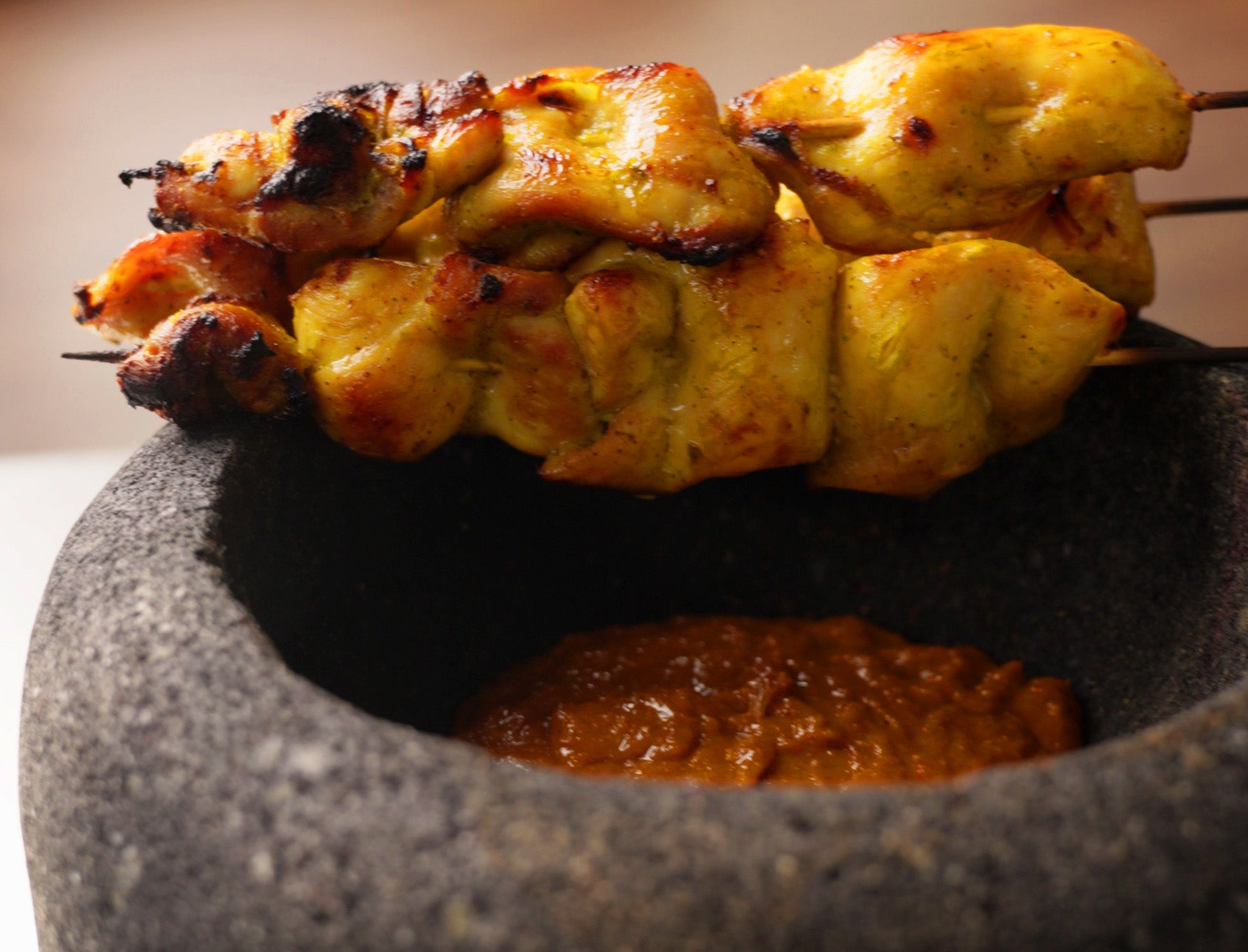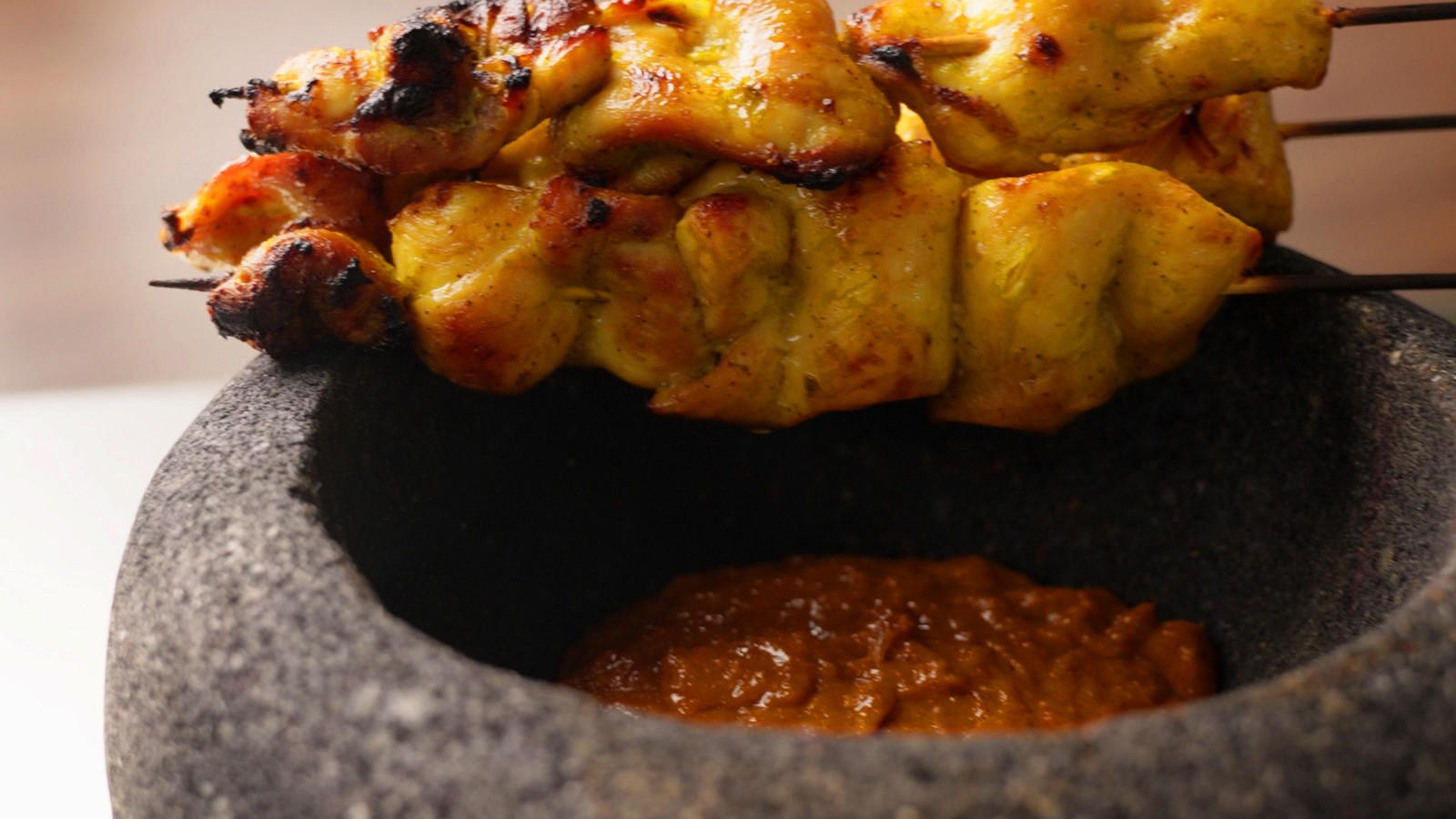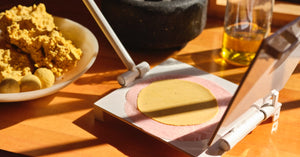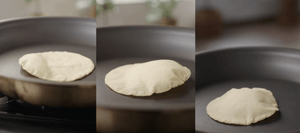Thai Peanut Satay in a Molcajete
Thai Peanut Satay in a Molcajete

March 30, 2023
The molcajete is an ancient tool, ubiquitous in kitchens across Mexico but also prevalent in cuisines across the globe, from Thailand to Italy to India. It differs from a mortar and pestle in its material (molcajetes are made from volcanic rock), but the function – to marry ingredients into a rustic but uniform paste or sauce – is essentially the same.
Chef Tyler Henry of Mexico City's Choza* is enamored with the device, and has collected over forty versions from different countries. At his restaurant, which serves bright, bold food infused with Thai, Mexican, Peruvian, and Ethiopian flavors, Thursdays are grind days, where he and his cooks pulverize a plethora of ingredients into the aromatic curry pastes that are the backbone of Choza's dishes, from morning to night. We sat down with Tyler to chat about the tool he loves best, and he kindly shared his recipe for a Thai peanut satay sauce that's delicious for dipping grilled chicken or pork, tofu or veggies.
Masienda: Why do you go to the trouble of working with a molcajete when you could use a blender?
Tyler: A molcajete is basically the focal instrument in the way we cook. I've actually done tests with the same curry paste made in a blender, and it's better in the molcajete. It might have to do with the fact that chopping something with a blade is not the same as it being mashed and its essential oils extracted.
Secondly, the energy and intention you're bringing to a dish yields a certain result. When you're making it in a blender, you press go and have the results. When you're making a curry paste in the molcajete, you're physically smelling, feeling, and touching each ingredient. You're more involved with it, you have more options to change it, and you can taste the difference. At Choza, we approach our curry pastes and spice blends through the lens of music. I have my cooks smell the ingredients, then ask them what color they smell, whether it smells cold or hot, what it would sound like if it were an instrument. The word for a good curry paste in Thai means silence, because in the final result, all the aromas and flavors end up blending to a place of energetic silence, where the flavors are rounded and balanced and you don't hear one over the other. The rustic texture that's impossible to achieve with a blender is key to the food we make at Choza.
Masienda: With such a big collection, how do you choose when to reach for a volcanic rock molcajete versus a granite krok (the Thai mortar and pestle) or others?
Tyler: Materials are important. Volcanic stone is a little more porous and softer than the Thai granite. The more vertically shaped, harder Thai krok is better for pounding very hard things like turmeric, galangal, etc. Mexican cuisine doesn't require that – its purpose is more for grinding than pounding. The benefits of volcanic stone is that it's slightly porous and a little rougher, making it very good for things like chiles, which demand a little texture to explode them. It's going to blend anything with liquid (garlic, onions, tomatoes) without too much pressure. Sometimes I wonder, did the salsa come because the stone was good for grinding those ingredients? Did curry paste come because the hard stone made sense for those harder ingredients?
With the proper technique, molcajetes need almost no effort. You should be letting stones grind themselves. Rather than to pound or twist, you gently loosely rub the tejolote (pestle) against the bottom side of the molcajete at a 45 degree angle, letting the weight of the tejolote work for you.
Masienda: How do clean your molcajete?
Tyler: Whenever I approach my molcajete, I think of what I made before and what I'm about to make. Oftentimes, I prefer not to clean it. I grind salt with the remnants of what I've just made. The salt dehydrates the molcajete, removes bacteria, and leaves this curry-flavored salt which I can use as a grinding agent and base for the next dish.
Masienda: It's almost like a mother sauce, or a mole.
Tyler: Exactly.
Masienda: What's great about the satay recipe you shared with us?
Tyler: It's flexible. If you don't have shallots, use onions. If you're out of peanut butter, use tahini, it's no problem. The most important thing is to smell and taste as you go, and adjust according to what feels right.
*If you can't make it to Mexico City on a weekend night, check out our Choza ridealong video here.



